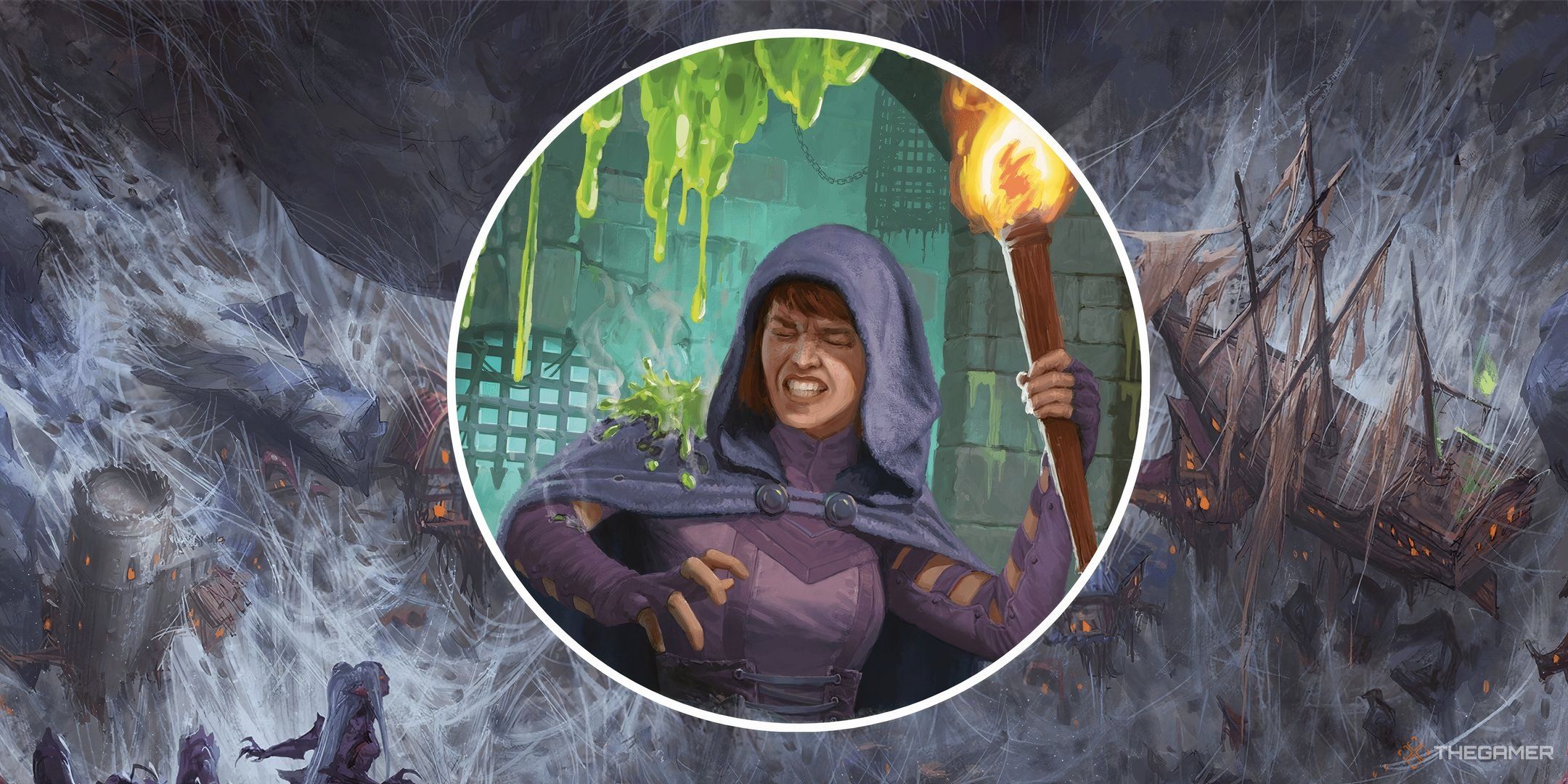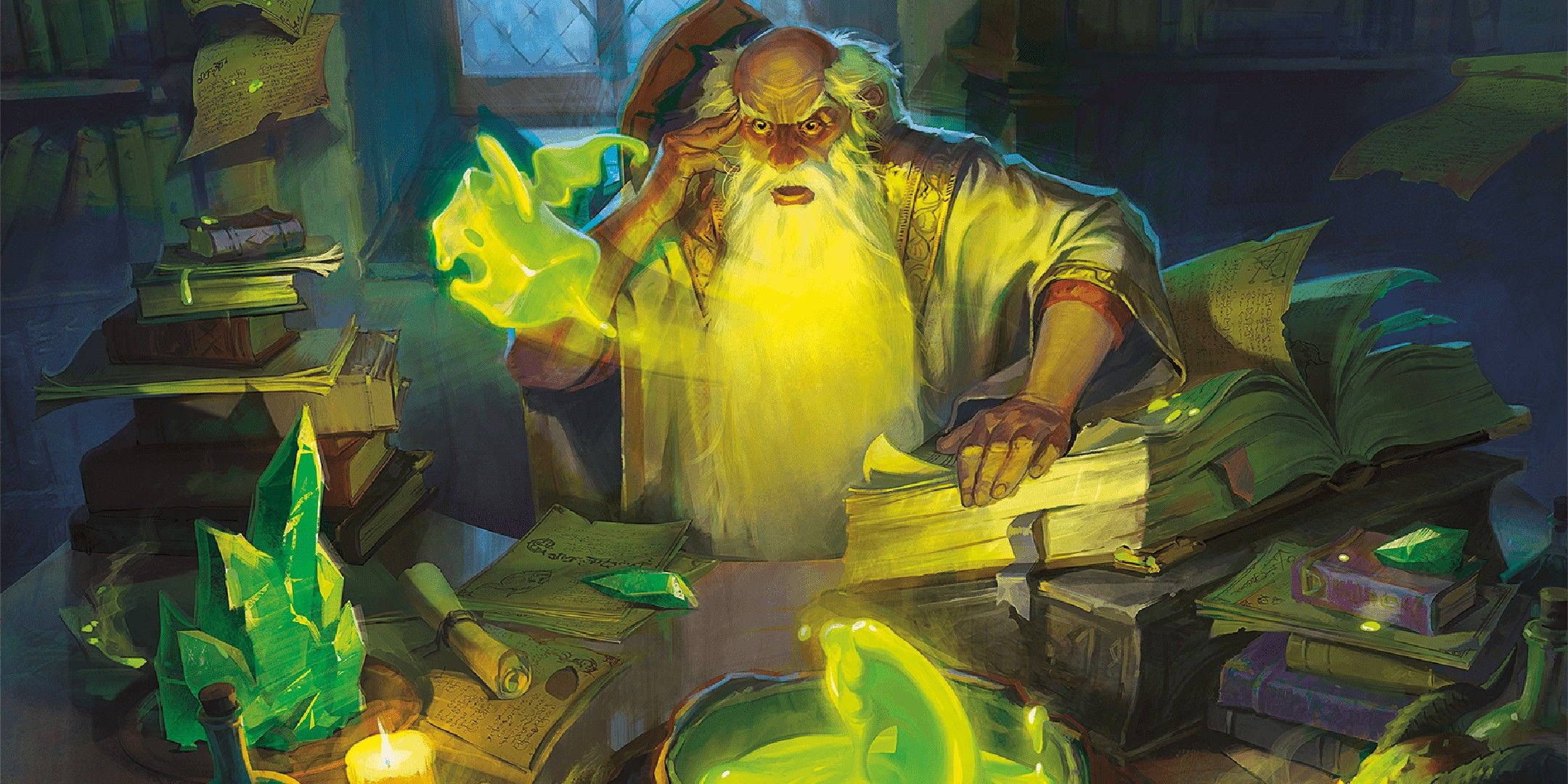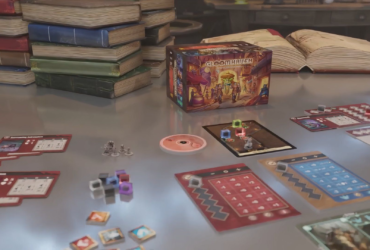Quick Links
In Dungeons & Dragons, one of the most fearsome creatures you can face is the Lich, an undead spellcaster of great power. Yet their undeadness or arcane prowess is not what makes them a Lich; a Lich can only be considered as such when they have a phylactery.

Related
Dungeons & Dragons: How To Fairly Punish Players
Sometimes, your players have to remember that actions have consequences, but that doesn’t mean those consequences should be out of this world.
This item allows the Lich to return to life (or rather, unlife) whenever they are destroyed. This makes the Lich not just a feared encounter, but a quest all on themselves, yet how does a phylactery work, and is there a way for players to craft one themselves?
What Is A Phylactery?
A phylactery is an object that holds part of a Lich’s soul, tethering the creature to the material plane (or whatever plane the phylactery might be on). In older editions, it had to be a jar or a metal container, but it can now be something as unassuming as a ring or a necklace.
Having a phylactery is often step one of becoming a Lich, but it isn’t the only step. You also need to perform profane rituals and sometimes drink a dark potion, but that information varies from edition to edition, so it is up to the Dungeon Master to decide the particulars.
In most editions that include the drinking of a potion, said potion has a chance of killing you.
How Does A Phylactery Work?
As far as how the item works in game terms, the phylactery allows the Lich to return to life next to it in 1D10 days after its demise. There doesn’t seem to be a limitation of distance or number of times the phylactery can do this, but there does seem to be a limit of only one phylactery per Lich.
Making a phylactery often weakens the caster that wants to become a Lich, which might make it not even possible for more than one to be had.
Within the lore, while the phylactery holds a fragment of the Lich’s soul, that isn’t enough to bring it back to life. Older editions had the need of a fresh body next to the phylactery (similar to how the Clone spell works), but in Fifth Edition, the phylactery instead needs a regular supply of souls.
Narratively speaking, this gives the Lich a simple goal to be evil and terrorize the population, preventing them from becoming too passive in any story. Should a Lich fail to feed the phylactery for an extended period of time, they would become a Demilich, a floating skull lacking spellcasting abilities.
If the Demilich manages to feed a soul to their phylactery, they go back into being a Lich.
Finding The Phylactery
The point of a phylactery is that it is well hidden since the Lich’s immortality depends on it. However, since defeating the creature is often the point of an adventure, the Dungeon Master will likely be leaving clues to its whereabouts. It will typically be a place significant to the Lich during their natural life or a secluded dungeon on the outskirts of town.
If you are looking for the phylactery in a social setting, Detect Magic is your best tool for the job. After all, no matter how mundane the object chosen as a phylactery might look, it will always be oozing with necrotic magic, making it stand out.
Destroying The Phylactery
In older editions, the phylactery was just an object with 40 hit points, so destroying it was just a matter of hitting it really hard. The description of the item in Fifth Edition makes it sound more like an Artifact, making it immune to most damage unless a specific condition is met.
It is ultimately up to the Dungeon Master how a specific phylactery can be destroyed, so pay attention to any hints given by them. Then again, without being formally defined as an Artifact, throwing a phylactery inside a pool of lava or a Sphere of Annihilation should do the trick.
How Are Phylacteries Made?
The real question you might be wondering is, ‘can players make phylacteries?’ and the answer is yes, but it won’t be easy. This is due to the information on the dark rituals revolving around making a Lich being far from public knowledge, and your Dungeon Master might not even give you a way to learn about them.
The previously mentioned Clone spell can give you most of the benefits of a phylactery without becoming a Lich, although it is an eighth level spell exclusive to wizards.
A fast way to learn these rituals is by becoming a servant of Orcus, the Demon Prince of Undeath; he might even give you an already powered-up phylactery, saving you time and money. Of course, that means that your eternal soul is now bound in servitude to the demon, but every relationship has its pros and cons.
If you don’t want to make a deal with Orcus, then you should work with your Dungeon Master for a way to have your character learn the rituals. One official way to do so is via the Book of Vile Darkness, an Artifact with many dangers attached to it as well as several benefits, particularly the Vile Lore section that details how to become a Lich.
Possible Phylactery Recipe
Crafting a phylactery needs to be a costly endeavor, which may or may not translate into gold cost. An ideal price for a phylactery is 100,000 gold pieces, which could be the price of the container or the price of the components for the spells to be cast on it.
Following the rules of Magic Item Crafting in the 2024 Dungeon Master’s Guide, you will also need proficiency with tools associated with the item working as a phylactery. The tools in question will depend on the nature of the item: a box would require tinker’s tools, while a ring would require jeweler’s tools.
You can consider a phylactery being a Legendary item, and as such it would take 250 days to make. While you won’t be able to cast spells with it, you may need to have certain spells prepared for the full duration, like Magic Jar, Reincarnate, and Clone.
You can divide the workload among a few assistants, at least halving the time needed to craft the phylactery.
Older editions had a price to pay that weakened the caster when creating a phylactery, since a portion of their soul would permanently reside there. You may have to lose a hit point die when creating the phylactery or enough experience points to go down one level.
The Ritual And Potion
If you are making a phylactery, then you’ll likely want to become a full Lich, which also has a few other steps involved. In older editions, there was an emphasis placed on dark rituals and a horrific potion, but you can bundle those together into the same thing.
The ‘dark rituals’ often referred to the process of becoming a free-willed undead, while the potion was all about sacrificing virgins and children. You can have the whole process be a single event: a dark ritual where the sacrifice of innocents turns you into an undead.
There might be a gold cost attached to this, but the monetary price was already covered by the phylactery. The dark, profane ritual should be about the evil actions that involve being a Lich, with the difficulty being the logistics of finding pure-hearted innocents and a place to sacrifice them.

Next
Dungeons & Dragons: How To Create Unconventional Combat Objectives
Creating some unconventional combat objectives is an easy way to get your players thinking in your DnD campaign.



















Leave a Reply